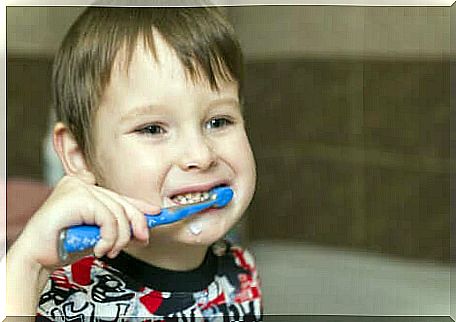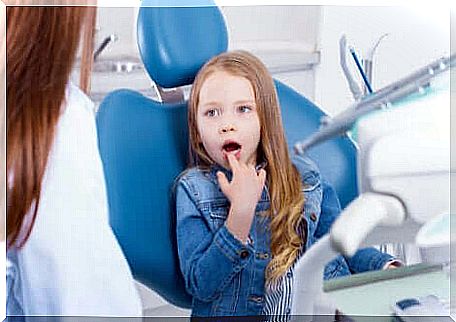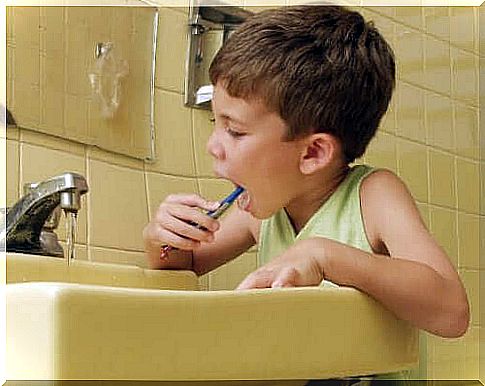Is Fluoride Good Or Bad For Children? – Being Parents

Often times, parents wonder if fluoride is good or bad for children. It is quite normal to wonder if there are any risks, what is the right dosage and how to give it to the little ones.
Confusion and doubts arise because, a few years ago, the American Dental Association recommended not to use fluoride until the age of 2, or until the child can spit. But today, since 2014, the same association, after examinations and research, suggests starting to use fluoride in small quantities as soon as the teeth appear.
In this article, we tell you more about fluoride and its benefits in preventing cavities. We also present to you the risks and the indicated ways of using it in children.
What is fluoride
Fluorine is a chemical element found in nature. We find it in soil, air and water. Its concentration in water depends on its origin.
In addition, it can be found in small amounts in certain foods such as blue fish, vegetables (cabbage and spinach), fruits (grapes), cereals (wheat and rice), and in black tea.

This mineral is very important in the mouth because of its effectiveness in preventing cavities. By mixing with tooth enamel, the hydroxyapatite that makes up the teeth turns into fluorapatite. It is a mineral much more resistant to the action of bacterial acids.
Why use fluoride in children?
In children, fluoride performs an important function in strengthening their teeth and bones. As we have already mentioned, it improves the quality and resistance of the enamel against the action of acids produced by bacteria in the mouth. It is therefore able to prevent the appearance of cavities and even treat the first signs of this infection.
Tooth decay is one of the most common childhood illnesses. It is a multifactorial condition in which bacteria in the mouth, together with other dietary, social and individual factors of the person, secrete acids that remove minerals from the teeth.
The elimination of these bacteria mechanically, by brushing the teeth, is fundamental for the prevention of cavities. Either way, the use of fluoride in the mouth has been proven to decrease the risk of cavities.
Their action consists, on the one hand, in inhibiting or delaying the demineralization of the enamel and, on the other hand, in promoting remineralization when there has already been a loss of crystals. In addition, their presence in the mouth reduces bacterial overgrowth.
How to use fluoride in children?
Fluoride can get into the mouth in two different ways. By systemic route, in other words through the ingestion of a product which contains this mineral. And topically, applied directly into the oral cavity.
Systemically
In this case, fluoride enters the body through the ingestion of food or drinking water. It is absorbed by the digestive mucosa, passes into the bloodstream and is distributed in the tissues, settling mainly in the teeth and bones.
The most common way to consume fluoride through this route is by ingesting clean drinking water. It is necessary to ensure that the water has an optimal and safe concentration (0.7 to 1.2 milligrams per liter). Because too high levels can be toxic and too low levels can require supplements in patients susceptible to suffer from cavities.
In general, public tap water contains optimal levels of fluoride and is safe for the public.
Systemically, the action of fluoride in children occurs during the pre-eruptive period. In other words, when the teeth are still forming in the bone. During the formation of teeth, the availability of fluoride is important. But its effect in preventing cavities is less than topically.
Topically
In this case, the fluoride is applied directly to the teeth that have already emerged. It is most effective when the tooth has just appeared because it is still porous and absorbs the mineral better. This includes toothpastes, mouthwashes, and gels and varnishes used by dentists in consultation.

Fluoridated toothpaste is the one parents use at home with their children. The main thing is to ensure that the fluoride concentration is appropriate for the age of the child.
The ADA recommends that the fluoride concentration in toothpaste for children aged 0 to 3 be 500 parts per million (ppm). Between 3 and 6 years of 1000 ppm, and for over 6 years of 1500-2000 ppm. As the fluoride content is higher, care must be taken that the dose of toothpaste placed on the toothbrush is not swallowed.
Nowadays, it is indeed considered advisable to begin dental hygiene with fluoride toothpaste as soon as the first teeth erupt. Just put on a stain of toothpaste (less than a grain of rice) and then clean no more than twice a day. By tilting the child’s head slightly forward so that he does not swallow everything.
From the age of 3, the dose can be the size of a pea. In addition, it is essential to teach children to spit and not to swallow toothpaste. Teeth brushing should be done by adults up to the age of 6 or 7 years and then supervised.
Other products with fluoride for children
The mouthwashes with fluoride should be indicated by the dentist based on the risk of tooth decay. Usually, they are not used until the age of 6. Because it is essential that the child can spit correctly.
In addition, the gels and varnishes that we have mentioned, are intended for professional use in the dentist’s office. It is he who places them according to the different needs.
Risks of fluoride in children
The usual use of fluoride does not pose a risk to human health. The most common associated risk is dental fluorosis, although it is rare.
This condition occurs due to the excessive consumption of fluoride during the period of tooth formation. In other words, from the age of 8, after the appearance of teeth in the mouth, the risk disappears.
Fluorosis is associated with the consumption of water with a high content of this mineral, not analyzed and endemic. The risk associated with the use of topical dental products is minor, except in the event of accidental excessive ingestion.
It is manifested by white, yellow or brown spots on the surface of the tooth, depending on the degree of affection. In general, it does not affect the function of the teeth and does not cause pain. Only the appearance is changed.
To reduce the risk of dental fluorosis, it is important to check the levels of fluoride in drinking water. It is also essential to use a toothpaste with a concentration adapted to the age of the child, and to put only the recommended dose on the toothbrush.
Teaching the child to spit and not to swallow is essential. Teeth brushing should be done by an adult up to the age of 6, and then supervised. Toothpaste should not be left within reach of children.
If the child swallows a small amount of toothpaste, this is okay. But if he swallows more than the recommended dose on the toothbrush or accidentally eats toothpaste, stomach pain may arise.
In these cases, consult a pediatrician or call the poison control center to be sure. In addition, it is advisable to give milk to drink, as calcium binds to fluoride in the stomach.

The Benefits of Fluoride Outweigh the Risks
The use of fluoride in children is very useful in preventing the onset of cavities. A very common problem in the mouths of little ones. The key is to strike a balance between giving enough to avoid dental complications and not giving too much to prevent further damage. Toothpaste with fluoride used correctly is safe.
If in doubt about the use of fluoride in children, it is best to consult a trusted dentist. If you prefer to use a fluoride-free toothpaste, be aware that it only serves to clean the teeth and leave a pleasant feeling and taste in the mouth. But it doesn’t protect against cavities the way fluoride products do.
Whichever you choose, it is always important to brush children’s teeth to ensure the removal of bacterial plaque. Another fundamental aspect is to visit the dentist regularly. Visits every six months make it possible to detect a problem in time and act on it.









